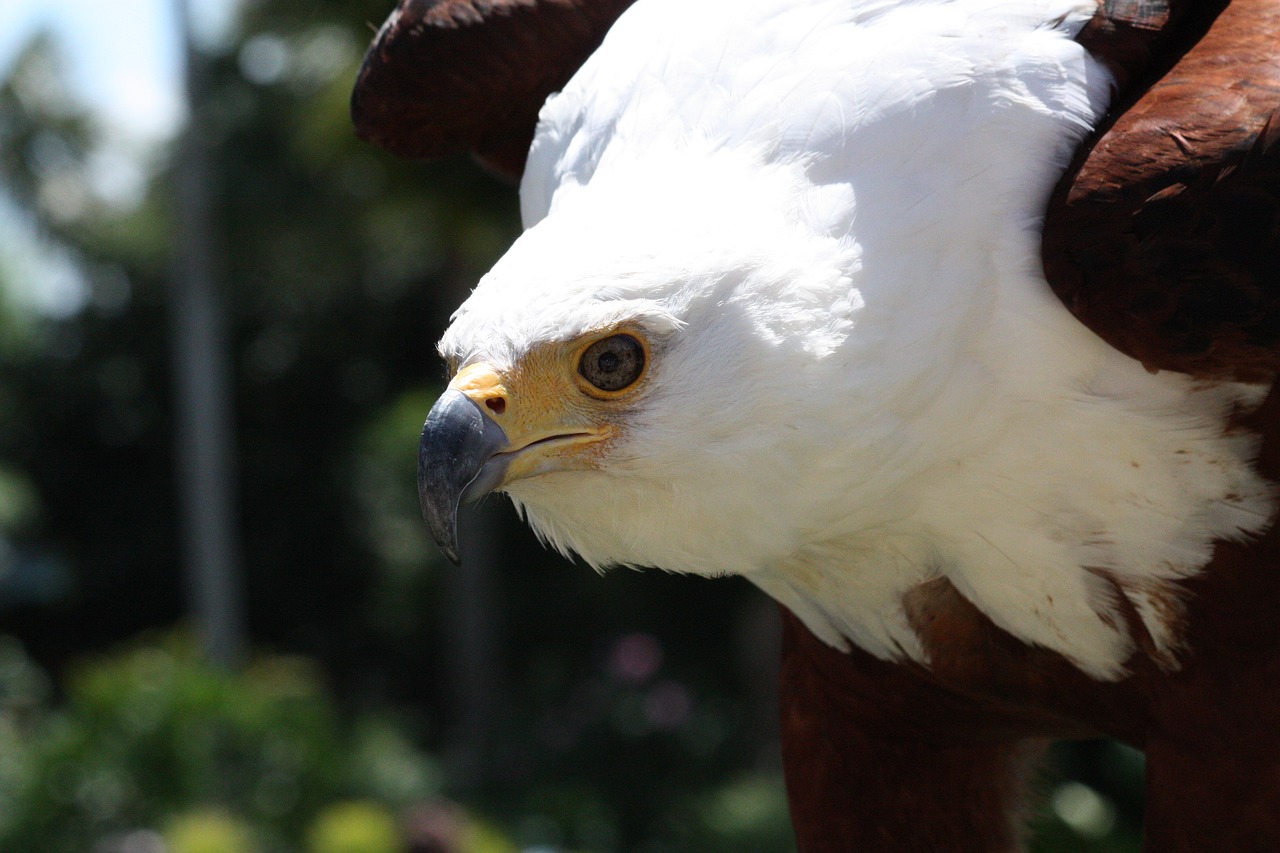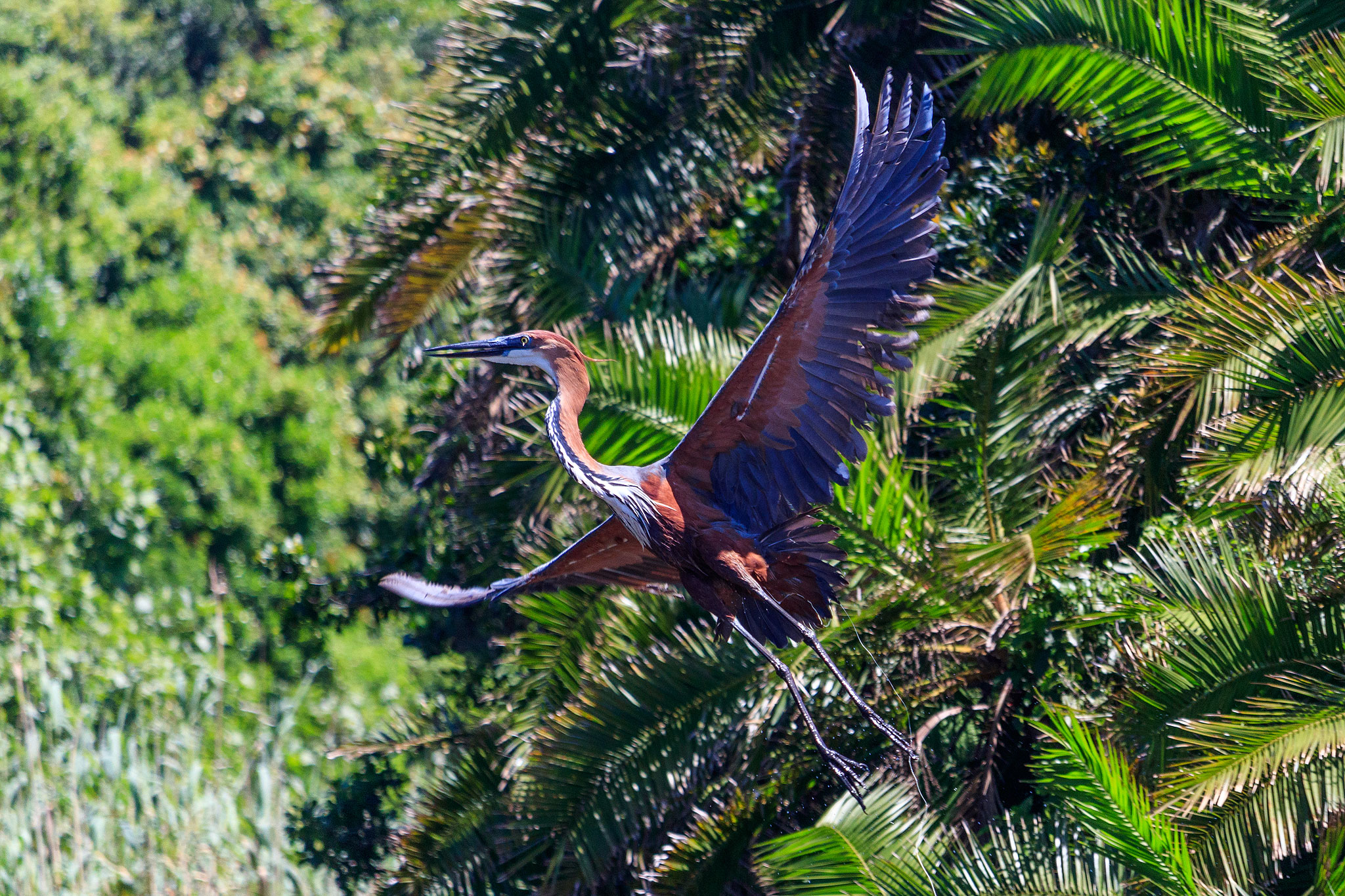Nicky Hoseck
Wings On The Hoof:
Our Top 10 Wild Coast Birds

#1 African Fish Eagle (Icthyophaga vocifer)
The iconic call of the African Fish Eagle is as distinctive as a lion’s roar and considered one of the most evocative sounds of Africa. On trail, it’s rare for a day to pass without us hearing or seeing a Fish Eagle, soaring over the rugged coastline.
With its large size and distinctive black-and-white colouring, the African Fish Eagle is hard to miss, even when it’s soaring overhead. Strong and athletic, the Fish Eagle performs impressive aerial maneuvers as it hunts, achieving speeds of 200-300km/h as it dives for its prey.
Although their diet is comprised primarily of live fish, Fish Eagles will also hunt other birds, and steal their catch in a practice known as kleptoparasitism.

#3 Grey Crowned Crane (Balearica regulorum
Sporting a golden crown of stiff golden feathers, these birds have an almost regal appearance, which they emphasize in a complex courtship dance.
Luckily for us, they also love grain and visit our horse paddocks in Kei Mouth almost daily in search of food. Although they lack the bulk of the Southern Ground Hornbill, they are still one of the largest birds we see on the Wild Coast, standing up to one metre tall, with a wingspan of up to two meters.
Crowned cranes mate are monogamous birds, remaining with the same partner for their entire lives. Each year, they return to the same breeding grounds where the pair work together to create a safe haven for the 2-3 chicks they produce annually.
Many years ago, large flocks of Crowned Crane used to congregate on Wavecrest beach, creating an unforgettable phenomenon. Sadly, environmental changes and increased human activity have led to a significant decline in their numbers and this once-common sight has become increasingly rare.

#5 Southern Ground Hornbill (Bucorvus leadbeateri)
This endangered bird is one of the largest in South Africa, standing between 90 to 129cm tall and weighing up to 6kg. With only 400-500 groups left in South Africa, we’re very fortunate to see these birds on the Wild Coast as we ride.
Although sightings are by no means frequent, when they do occur, they’re unforgettable. Seeing these enormous birds launch themselves into the air is truly breathtaking. Their wings, which can reach up to 2.5 meters wide, create a dramatic silhouette as they take to the skies.
Sadly, Southern ground hornbills are slow to breed, producing only one chick every few years. They are also one of the few species in which only the dominant pair breed. The rest of the group dedicate themselves to raising the chosen chick, leaving the others to perish.
Conservation efforts are crucial for the survival of these unusual birds and every sighting we get of them is both a privilege and a hopeful sign for the future.

#7 Pied Kingfisher (Ceryle rudis)
The Wild Coast boasts a wide variety of kingfishers, from the diminutive Pygmy Kingfisher to the more sizable Giant Kingfishers.
Of the seven species occurring in the area, we most commonly see the Brown-hooded and the Pied.
As eye-catching as the Brown-hooded Kingfisher is, it lacks the aerial acrobatics that make the Pied Kingfisher stand out from the rest. With its unique hovering technique, speed and agility, the Pied Kingfisher frequently entertains us as we ride.
Like most kingfishers, the Pied lives on a diet of fish and, after hovering 50-65 feet above the water, performs a gravity-defying plunge into the water, often emerging with a wriggling fish firmly clasped in its beak.
Unlike other kingfishers, the Pied can eat on the wing, so is free to hunt over large expanses of water that prove too challenging for other species. A predominantly coastal bird, Pied Kingfishers sometimes venture inland, fishing in dams and rivers, as well as coastal lagoons and estuaries.

#9 Common Tern (Sterna hirundo)
A single common tern perched on the beach is unlikely to turn heads, but when a flock of 100 or more suddenly takes off, it creates a spectacle of avian choreography, complete with coordinated aerobatics and flashing white wings.
Large flocks of terns congregate on the Wild Coast beaches daily, lingering on the sand until the very last moment, when they suddenly take to the air in response to the threat posed by horses and riders. As their sleek bodies and forked tails cut through the air, they transform the tranquil beach into a maelstrom of activity, accompanied by a loud chorus of high-pitched calls.
Common terns aren’t as ordinary as their name suggests - they’re quite unusual in that they can drink either salt or freshwater, using their specially adapted nasal glands to excrete any excess salt. They are also impressive architects who add bones and shell fragments to their nests to protect them against high tides.






